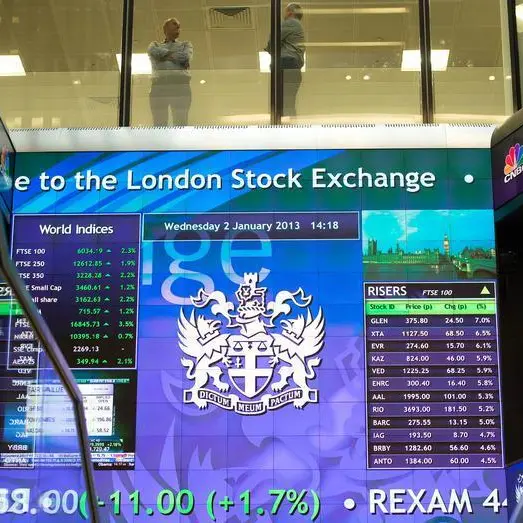Welcome to Zawya Markets. Each Sunday we will be featuring an interview with a different analyst or markets expert from around the region.
If you would like to participate please email gerard.aoun@refinitiv.com.
1) Small and medium enterprises (SMEs) contribute to almost 50 percent of GDP in G7 countries, are banks worldwide successfully serving their needs?
SMEs are a core engine for job creation and economic development worldwide. Traditionally, banks are key contributors to SME development through the provision of financing. In developed markets, bank financing remains a major source of funding for SMEs (according to a recent study by the International Finance Corporation, around 62 percent of SMEs in the United States chose bank loans over other forms of financing, and similar trends are observed in Western Europe).
The major reason for this is the relatively high maturity of the financial and regulatory infrastructure in developed markets, such as customised financial products, the consistency of SME information, SME-specific credit bureaus, bankruptcy laws and the adoption of innovative technologies enabling banks to extend financing to SMEs.
In recent times, there has also been a spurt in alternative financing for SMEs (i.e. lending from bodies other than traditional banks) such as peer-to-peer lending ( such as Lending Club in the U.S. or Zopa in the UK) and multi-lender marketplaces such as MoneySuperMarket in the UK and Check24 in Germany. Alternative financing firms offer ease of application, rapid loan underwriting, and a greater emphasis on customer service. In view of this, leading banks (especially in the U.S. and Europe) are partnering with fintech firms to enhance their product offerings. For instance, JP Morgan Chase has partnered with OnDeck (an online direct lender) to reduce loan application times for SME customers, which has historically been a major pain point for small businesses seeking loans.
Fifth Third Bank (a regional bank in the U.S.) has partnered with Greensky to improve credit metrics and reduce decision times. Even from a deposits and account management standpoint, Banks are driving innovative value proposition. For example, DBS in Singapore launched a new service for SMEs to instantly link their bank accounts with Xero’s (an online accounting service provider) cloud platform. Transaction data can flow securely and automatically into Xero and the business owner will get a reliable, up-to-date view of their financial position.
In developing markets, there is a growing focus by banks to serve the SME segment, with banks creating SME-specific business divisions and customised products using digital technologies tailored to SME requirements. However, inadequate financial and regulatory infrastructure limits the outlay of financing to SMEs. Bank loans to the SME segment in developing markets is estimated to be below 10 percent in most markets. Beyond financing, banks have the opportunity to provide a wider range of value-added services (such as working capital solutions, custodian services, business advisory etc) that are critical for SMEs.
2) What type of challenges face SMEs in the MENA region? Is funding the main challenge?
SMEs in MENA face several challenges ranging from complex administrative procedures (including business licensing and account opening), lack of affordable infrastructure (office space, electricity), limited access to talent and lack of financing. However, there is significant variability across MENA countries. For instance, lack of financing is the most fundamental and biggest challenge faced by SMEs in the United Arab Emirates. In a recent SME survey conducted by Dubai SME, more than 60 percent of the SMEs rated a lack of finance as their biggest challenge. The UAE government has recognised these challenges and has launched a series of initiatives (for example, credit guarantee schemes) to support SME financing. In Saudi Arabia, complex and time-consuming administrative procedures and access to human capital also rank highly in issues affecting SMEs, in addition to lack of funding.
3) A World Bank/ Union of Arab Banks survey shows that only 8 percent of bank loans go to SMEs across MENA, with this n and the number drops to 2 percent for GCC countries. How do these numbers compare with countries that have a developed SMEs segment?
SMEs in developed markets certainly receive a greater proportion of bank loan funding compared to their peers in developing markets. In some developed markets, such as Singapore, the SME segment is estimated to receive around 20 percent of all bank loans.
4) Do banks classify clients as SMEs only based on size (revenue, number of employees, portfolio…)? Which framework in your opinion should bank implement to better deal with SMEs needs?
The definition of an SME varies across countries, characterised by the number of employees (typically less than 250 employees), annual revenues, total assets or a mix of these factors (e.g., European Union). In some countries (e.g. the U.S.), the threshold differs from industry to industry.
The lack of a consistent SME definition is a common challenge observed in several jurisdictions. In most countries, there is no legal definition of SME and as a result, banks employ their own methods of SME classification.
As banks develop SME capabilities, they will need to deploy a customised framework to better segment and assess SME customers. For this, banks should look at aspects beyond revenue, or size, and consider other dimensions such as the sector, the stage of business operations (is it a start up? In a growth phase?), business footprint and transaction flows to develop a holistic understanding of the customer. This will help banks to expand their service range beyond traditional products.
5) The Saudi government has been allocating money into the SME segment as part of vision 2030. Have Saudi-based banks relaxed their funding requirements for the segment or are companies accessing capital by other means?
The development of the SME segment is one of the main aspirations and objectives of Vision 2030. To achieve this, the Saudi government has launched several initiatives - such as the SME general authority, Monshaat - focused on developing and financing the SME sector.
More recently, the kingdom has announced the launch of Saudi Exim Bank which will cater to the financing needs of SME exporters. In addition to this, several existing developmental financial institutions such as SIDF and Kafalah (an SME loan guarantee scheme) have increased their focus and capacities to fund Saudi SMEs.
While banks have not specifically relaxed the norms for SME financing, the emergence of loan guarantee schemes such as Kafalah has enhanced bank’s capacities to lend to the SME sector. Since its launch, Kafalah has extended guarantees of around 10bn Saudi riyals ($2.67bn) to the banks towards 20bn riyals in financing extended to around 20,000 SMEs. In addition to financial institutions, localisation initiatives of some flagship organisations such as Saudi Aramco and SABIC are also supporting SMEs by integrating them into industrial supply chains.
6) In recent years, we have seen quite a few ‘skip’ cases from business owners that fled the country fearing imprisonment due to unpaid debt. What’s the likelihood of a reoccurrence of this as the economy slows? Do you expect banks’ NPLs to increase as a result?
The UAE banking sector suffered from a rise in NPLs from SME portfolios post-2014 as many came under stress from an economic slowdown following the oil price crash.
Some banks faced delinquencies of up to 20 percent in their SME portfolio, and the lack of a unified bankruptcy law exacerbated the situation, forcing owners fearing imprisonment for unpaid debts to flee the country.
However, the introduction of a bankruptcy law by the UAE in 2016 was a significant step towards supporting SMEs in distress, who now have the option of restructuring their debt. Today, the UAE banks’ exposure to the SMEs segment is low (around 3 percent or more of total bank funding) as banks have become lot more cautious and risk-averse in their SME funding. While the economy is still in recovery mode and banks continue to rebalance their portfolios, we do not anticipate a repeat of the level of ‘skip’ cases observed a few years back.
7) What impact (if any) have the bankruptcy laws introduced in the UAE and Saudi Arabia had on the SME market? Is there much evidence of formal debt restructuring procedures yet?
The establishment of the bankruptcy laws across the UAE and the KSA has given the right impetus to the SME sector in the region. However, the uptake of the bankruptcy law is yet to be fully validated. While, it is a step in the right direction, one of the contentious issues of the law is the treatment of bounced cheques, which is still considered a criminal offence and can lead to imprisonment. Also, the awareness among SMEs about the bankruptcy law needs to be further enhanced.
8) What government initiatives would provide a better environment for SMEs in the Gulf Cooperation Council (GCC)? Which support mechanisms have proven to work best worldwide that could be applied in the region?
GCC governments can work on several areas to support the development of SMEs. For example, there is certainly a need and scope for strengthening of the financial infrastructure. Some of the solutions that can be adopted here include establishing a centralised collateral registry, creating SME-specific credit bureaux or enhancing the capabilities of existing ones, launching alternative financing products such as crowd funding, instant payment solutions, national KYC utilities, and national trade and e-invoicing platforms. More specific to the banking sector, GCC governments can enforce SME lending quotas, adjust KYC norms for the SME segment or support the development of SME lending capabilities in the banking sector. Finally, there are several areas to consider on the regulatory front as well. For example, relaxation of capital adequacy ratio norms for SME lending, upgrading bankruptcy laws, adapting auditing requirements for SME businesses and creating unified legal definitions for SMEs. Most developed markets have deployed a broad set of solutions such as this to develop their own SME sectors.
(Editing by Gerard Aoun and Michael Fahy)
Any opinions expressed here are the author’s own.
© Opinion 2019












